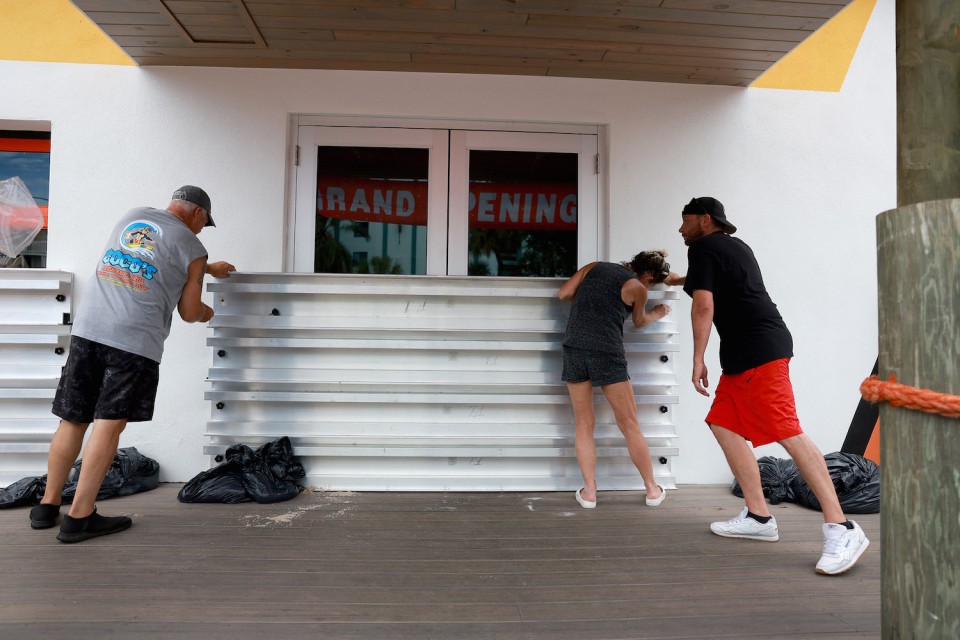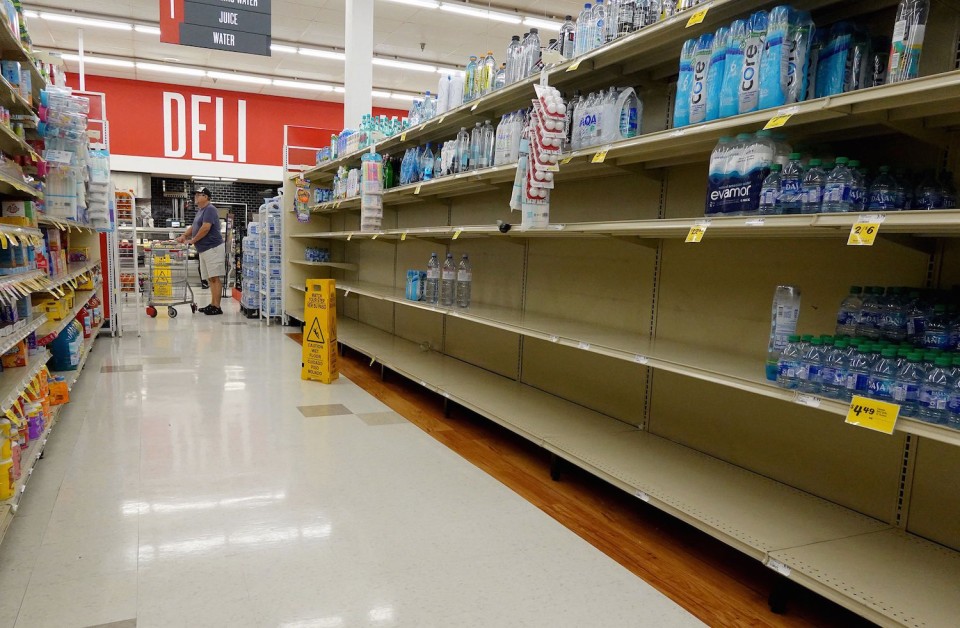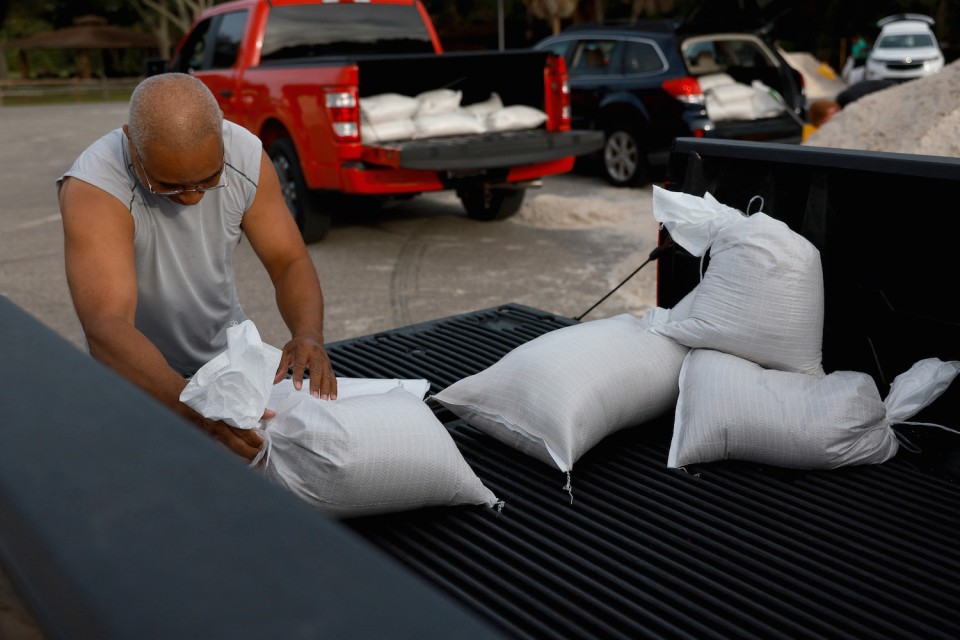
STEINHATCHEE, United States, Aug 29, 2023 (AFP) – Hurricane Idalia intensified Tuesday as it churned toward the west coast of Florida, triggering mass evacuation orders and flood alerts as authorities warned of life-threatening ocean surge and catastrophic destruction when the storm rages ashore early Wednesday.
The US National Hurricane Center (NHC) said Idalia, which earlier raked western Cuba, had strengthened to a Category 2 storm with winds of 100 miles (161 kilometers) per hour, and was lashing outer islands of the Florida Keys.
Warm waters in the Gulf of Mexico are expected to further turbocharge Idalia into an “extremely dangerous major hurricane before landfall on Wednesday,” the NHC said, warning of “storm surge inundation of 10 to 15 feet (3-5 meters)” in coastal areas.
“Very few people can survive being in the path of a major storm surge, and this storm will be deadly if we don’t get out of harm’s way and take it seriously,” said Federal Emergency Management Agency (FEMA) chief Deanne Criswell.
Major hurricanes are Category 3 or higher on the five-level Saffir-Simpson scale, with winds above 110 miles per hour that the NHC says could cause “devastating damage.”
In the small coastal town of Steinhatchee, resident Robert Bryant was making final preparations to evacuate inland with his two cats and a dog.
“We are out on the water, so we are going to be the worst ones to get hit,” said the 18-year-old student, whose home built on stilts is close to the mouth of a river.
“Hopefully, it just blows over and we have a bit of wind… but you prepare for the worst and hope for the best,” he told AFP.
The nearby city of Tampa, part of a metropolitan area that is home to more than three million people, is a focus of particular concern, authorities said.
“There’s a danger of life threatening storm surge along portions of the Florida Gulf Coast from Tampa Bay to the Big Bend region,” said Matthew Payne of FEMA’s Office of Response and Recovery.


– Leave ‘now’ –
Florida Governor Ron DeSantis urged those in the evacuation areas along the Gulf coast to go “now.”
“You don’t have to go hundreds of miles,” he told a news conference, urging coastal residents in the 23 counties under evacuation orders so far to get to shelters or hotels that were out of the danger zones.
Almost 150 people were killed last year when Hurricane Ian slammed Florida’s west coast as a devastating Category 4 storm, bringing ocean surges and heavy winds that downed bridges and swept away buildings.
Idalia is expected to make landfall farther north along the coast, in the so-called Big Bend area — a vast marshy region which, unlike most other coastal areas around Florida, does not have barrier islands.
The storm is forecast to dump up to 12 inches (30 centimeters) of rain in parts of the Florida Panhandle, potentially triggering flash and urban flooding, and tornadoes were also possible along Florida’s west central coast through Tuesday night, according to the NHC.
“We’ve not really had a hurricane strike this area for a long, long time,” DeSantis told reporters.
“You are going to see a lot of debris — there’s a lot of trees along that track,” added the Republican governor, who has suspended his presidential campaign to handle the crisis.
The NHC expressed confidence Idalia would “reach the Big Bend coast of Florida on Wednesday morning.”
US President Joe Biden spoke with DeSantis on Monday and approved an emergency declaration for the state, which unblocks federal funds and resources.
Biden expressed concern about the looming storm surge and told reporters federal authorities were monitoring Idalia “hour to hour.”
“We’ll make sure they have everything they need,” he said.
Tampa International Airport has closed ahead of Idalia’s arrival, while flights were disrupted along the US East Coast as another hurricane, Franklin, churns in the Atlantic.
– ‘Marine heat wave’ –
Georgia and South Carolina are also under storm watches as Idalia is expected to cross northeast over Florida before exiting into the Atlantic.
All three states could see flooding on Wednesday or Thursday, with Idalia likely maintaining hurricane force across Georgia, the NHC said.
In Cuba the storm flooded several communities including parts of the capital Havana and knocked out power to some 200,000 people but there were no deaths reported.
“Now we have to work urgently” at restoring electricity, communications and organizing food distribution, President Miguel Diaz-Canel said at a meeting in Havana to coordinate disaster response.
After clipping western Cuba, the storm moved out over the Gulf, which scientists say is experiencing a “marine heat wave” — energizing Idalia’s winds as it races toward Florida.
Scientists have warned that storms are becoming more powerful as the world warms due to climate change.







